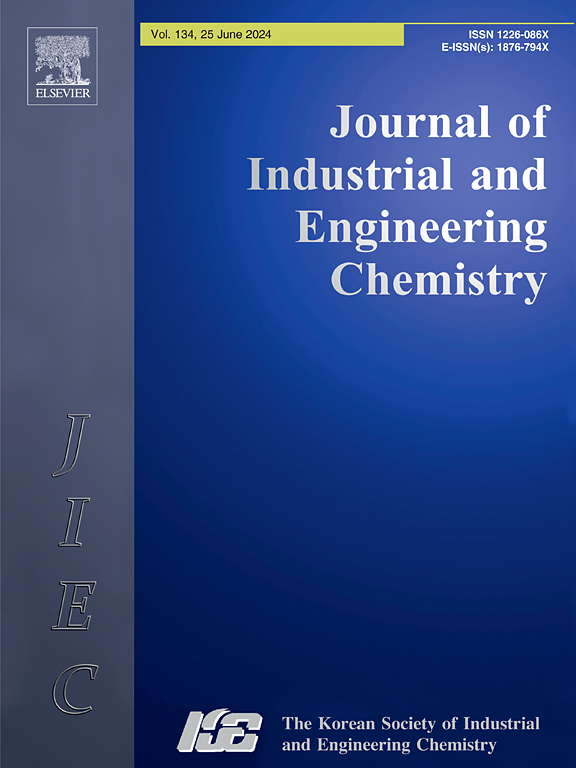Fusarium oxysporum mediated synthesis of nitrogen-doped carbon supported platinum nanoparticles for supercapacitor device and dielectric applications
IF 5.9
3区 工程技术
Q1 CHEMISTRY, MULTIDISCIPLINARY
Journal of Industrial and Engineering Chemistry
Pub Date : 2025-01-25
DOI:10.1016/j.jiec.2024.07.017
引用次数: 0
Abstract
A scalable method has been developed for synthesizing nitrogen-doped carbon-supported platinum nanoparticles. Fusarium oxysporum was utilized as reducing and stabilizing agent, and calcination was employed to produce the carbon support. The unique properties of Fusarium oxysporum facilitate the reduction of metal ions while preventing agglomeration and maintaining nanoparticle stability. An extensive investigation of the electrochemical supercapacitor and temperature-dependent dielectric properties of the nanoparticles demonstrates their suitability for supercapacitor applications. Electrochemical analysis showed N-doped C/Pt NPs with high specific capacitance, 482.77F/g at 2.0 A/g, retaining 94 % capacitance even under 20 A/g after 10,000 cycles. The symmetric supercapacitor device displayed 275F/g at 2 A/g, maintaining 61.10 Wh/kg energy density at 1000 W/kg power density, with ∼ 92 % capacitance retention after 10,000 cycles. Dielectric properties of N-doped C/Pt NPs were analyzed at both ambient (300 K) and elevated (450 K) temperatures, revealing temperature-dependent characteristics and alternating current conductivity. At 0.75 MHz, the dielectric permittivity (ɛ’) was measured at 31, with tangent loss at 2.01 and a.c. conductivity at 2.597 × 10-3 O−1 m−1. Increasing the frequency to 6.0 MHz resulted in a 2.38-fold rise in dielectric permittivity and a decrease in tangent loss to 0.77, demonstrating the temperature-sensitive nature of dielectric relaxation.

氧孢镰刀菌介导合成用于超级电容器设备和电介质应用的氮掺杂碳支撑铂纳米粒子
本文章由计算机程序翻译,如有差异,请以英文原文为准。
求助全文
约1分钟内获得全文
求助全文
来源期刊
CiteScore
10.40
自引率
6.60%
发文量
639
审稿时长
29 days
期刊介绍:
Journal of Industrial and Engineering Chemistry is published monthly in English by the Korean Society of Industrial and Engineering Chemistry. JIEC brings together multidisciplinary interests in one journal and is to disseminate information on all aspects of research and development in industrial and engineering chemistry. Contributions in the form of research articles, short communications, notes and reviews are considered for publication. The editors welcome original contributions that have not been and are not to be published elsewhere. Instruction to authors and a manuscript submissions form are printed at the end of each issue. Bulk reprints of individual articles can be ordered. This publication is partially supported by Korea Research Foundation and the Korean Federation of Science and Technology Societies.

 求助内容:
求助内容: 应助结果提醒方式:
应助结果提醒方式:


